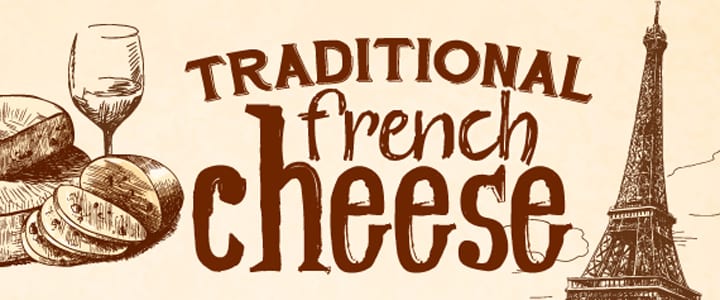What better snack to pair with your French study session than some authentic French cheese? Tutor Nadia B. shares everything you need to know about French cheese…
Do you have a baguette and a wheel of brie? Well, just a minute, there. While there’s nothing more French to us than bread and cheese, the world of French cheese is complex, fascinating, and delicious.
Keep reading, and you’ll learn how French cheeses are produced, how to choose an authentic French cheese, and about some of the most classic types of French cheese. Once you’re done reading, you’ll want to get to the cheese shop right away!
It’s an incredible reality that there are hundreds of varieties of French cheese (the exact number depends on who you’re talking to). Some of the most well-known and popular varieties include Camembert, Roquefort, Boursin, Munster, and Chèvre.
Share this Image On Your Site
In addition to recognizing popular French cheese, an important aspect of picking out a cheese is understanding the label. The terms Protected Designation of Origin (PDO) and Appelation d’Origine Contrôlée (AOC) are essential to know. These two terms signify that a cheese is authentically produced in France. It’s a sign of quality and origin, and there are around 50 types of French cheese bearing the label. Similar to the certifications made for wine, these labels are a guarantee of a cheese’s heritage and protection under French law.
French cheeses aren’t limited to just a few regions; in fact, they come from all over France, with each region making certain types of cheese. Some of the most popular regions for cheese include Burgundy (central-east), Normandy (northwest), and the Alps (southeast).
To narrow down your choices of French cheeses, remember that cheese can be divided into three types: hard, soft, and blue, all of which are comprised of many varieties. Cheese can also be made from three different types of milk: cow, sheep, and goat. Lastly, you can also learn about where and how the cheese was produced from the following descriptions:
–Fermier is a farmhouse cheese, which means the cheese was produced from the milk to the cheese-making all on the same farm.
–Artisanal means that the cheese is made from milk from the same farm, but the producer may also supplement it with milk from other farms.
–Coopérative is for cheese that has been produced by a dairy in collaboration with local milk producers. While this sounds like a small operation, it can grow into a big one and thus be more industrially-oriented.
–Industriel is cheese that is made in a factory; the milk may come from a variety of places, from local to regional to country-wide.
As interesting as it is to learn about French cheese, you might now be wondering how to pick a cheese. If you’re visiting France, stop by your local fromagerie to find a wide selection of cheeses and a deep knowledge about various aspects of cheesemaking and the cheeses themselves. Don’t hesitate to ask the shopkeepers for suggestions and information about all things cheese.
If you’re still at home but want to try an authentic French cheese, take some time to get to know the different types of cheese and then peruse a high-quality grocery store or cheese shop to make a selection. You might want to pair it with a nice wine from France, too!
Lastly, if you’re feeling overwhelmed by all the options when selecting a French cheese, you’re in good company. Former French president Charles de Gaulle once said, “Comment voulez-vous gouverner un pays qui a deux cent quarante-six variétés de fromage?” (“How can you govern a country which has two hundred and forty-six varieties of cheese?”)
France, in all its variety, beauty, and delicacies, leaves many of us shaking our heads in disbelief…while still enjoying some flavorful, rich cheese.
 Post Author: Nadia B.
Post Author: Nadia B.Nadia B. teaches flute, piano, and Italian lessons in New York, NY, as well as through online lessons. She received her degree in Music Performance from New York University and speaks English, Italian, and French. Learn more about Nadia here!
Megan L.



